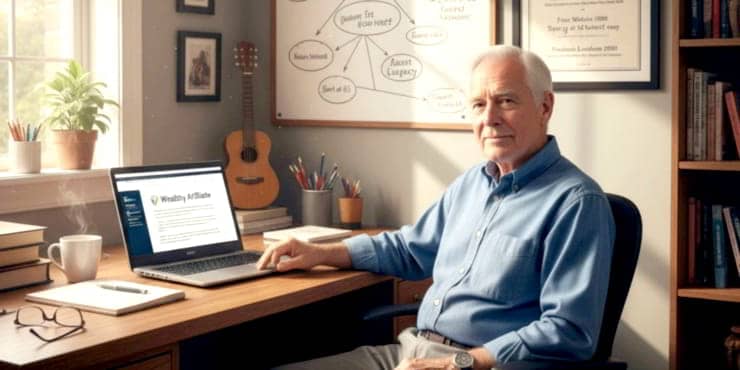Why Is Strategic Thinking Important? Importance Of Reflection And Strategic Thinking For Planning

Estimated reading time: 6 Min
Why is strategic thinking important? Along with reflecting on past experiences, it creates a system that enables the creation of a plan to guide you into the future.
In personal and professional development, two unsung heroes play important roles behind the scenes: reflection and strategic thinking.
These thinking skills are cornerstones of successful planning, guiding us through the complexities of decision-making and goal-setting with the grace of a maestro conducting a symphony.
But have you ever paused to consider how these processes can transform your approach to planning?
The Art of Reflection
Reflection is a bit like gazing into a rear-view mirror, allowing us to see where we’ve been, and what is following as we navigate forward.
It’s about being aware of the past and learning from it, extracting valuable lessons from our experiences to guide our path ahead.
Imagine standing atop a hill, looking back over the path you’ve climbed. Each step taken, whether stumbling or steadfast, offers insights that tell you what actually happened and can enhance future plans.
Reflection also promotes self-awareness, a crucial ingredient for personal growth and improvement.
By examining our actions, decisions, and outcomes, we can identify what went well, what didn’t go so well, which helps us make changes so that we can dance more gracefully in the future.
It’s a process of internal dialogue, where we ask ourselves tough questions and listen to our whispers of wisdom gained through experience.
So Why Is Strategic Thinking Important?
Strategic thinking, on the other hand, is like the chess game of the mind, where foresight, planning, and anticipation of future challenges and opportunities come into play.
It’s about envisioning your next moves, not just to react to the present, but to proactively shape the future.
Like a chess master, who sees the board not just for the pieces that are on it but for the potential moves they represent, strategic thinking involves understanding the bigger picture and aligning our daily actions with our long-term goals.
This form of thinking empowers us to handle the complexities of life and work, improving decision making with a sense of purpose and direction.
It’s about living your life deliberately, knowing that while the winds may change, our ability to adjust course ensures we remain on track towards our desired destination.
Strategic thinking turns aspirations into actionable plans, transforming ‘what ifs’ into ‘how tos’.
The Synergy of Reflection and Strategic Thinking in Planning
When reflection and strategic thinking merge, they form a powerful alliance that enriches the planning process.

Imagine you’re a ship’s captain charting a course across the open sea. Reflection allows you to learn from past voyages, understanding the sea’s moods and whims, while strategic thinking plots the course ahead, anticipating storms, seeking favourable winds, and aiming for the treasure-laden shores of your goals.
This synergy enables a holistic approach to planning, where lessons from the past inform strategies for the future, ensuring our plans are not only ambitious but grounded in reality.
It’s about striking a balance between dreaming big and being pragmatically prepared for the challenges that lie ahead.
By reflecting on our journey thus far and strategically planning our next steps, we create a blueprint for success that is both inspired by our aspirations and informed by our experiences.
Through the lens of reflection and strategic thinking, planning, often just a task to be ticked off a list, becomes a journey of self-discovery and forward-looking ambition.
As we explore these concepts, remember that the art of planning reflects our ability to turn every challenge into an opportunity to assist in designing a route towards success.
Practical Tips for Incorporating Reflection and Strategic Thinking into Planning
Incorporating reflection and strategic thinking into your planning process might seem like a daunting task at first, perhaps like learning a new language.
However, with practice and patience, it becomes second nature, a part of your daily rhythm.
Here are some practical steps to help you embark on this journey:
- Schedule Some Time for Reflection
Just as you might savour a cup of tea in the morning, make reflection a non-negotiable part of your routine. Dedicate time each week to look back on your actions, decisions, and their outcomes. Use a journal to pen down your thoughts, or perhaps, find solace in meditation. This practice is your personal debrief, a chance to celebrate victories and glean lessons from setbacks. - Exercise Your Strategic Thinking Muscles
Like any skill, strategic thinking gets stronger with use. Engage in exercises that challenge you to think ahead and consider multiple scenarios. Try mapping out your goals using a vision board or engaging in brain teasers and strategy games. These activities not only sharpen your strategic thinking skills but also make the process enjoyable. - Set Aside Dedicated Planning Time
Planning shouldn’t be squeezed in between meetings or rushed through during a commute. Treat it with the importance it deserves, setting aside dedicated time to explore your reflections. This is your captain’s log moment, where you review the past and then chart the course ahead with intention and insight. - Seek Feedback and Diverse Perspectives
A ship’s captain consults the stars, the wind, and their crew for guidance. Similarly, seek feedback from mentors, colleagues, and friends. Diverse perspectives can illuminate blind spots in your planning and enrich your strategic approach. But always remember that the most important decision is the one you commit to.
Overcoming Challenges
Even the most seasoned sailors face storms.
In the journey of reflection and strategic thinking, you may encounter challenges such as time constraints, cognitive biases, and the discomfort of confronting past failures.
Here’s how to face up to these challenges:
- Tackle Time Constraints
Prioritise reflection and strategic thinking as you would any critical appointment. Remember, planning is an investment in your future success; allocating time for it pays dividends in clarity and direction. - Acknowledge and Address Cognitive Biases
Be aware of biases that might colour your reflection and strategic planning. Seek objectivity, perhaps through feedback from trusted peers or by challenging your assumptions directly. - Embrace Failures as Learning Opportunities
Reflecting on past failures and setbacks can be uncomfortable, but it’s also incredibly valuable. Approach these moments with curiosity rather than judgement. Ask yourself, “What can this teach me?” This mindset transforms challenges into stepping stones.
Summary
So, I hope it’s clear that reflection and strategic thinking are tools for effective planning and the very essence of it.
By embracing these ideas, we become adept navigators of our own lives, capable of charting a course that is both ambitious and attainable.
Now consider how you can incorporate reflection and strategic thinking into your next planning.
Imagine the possibilities that unfold when you approach your goals with the dual lenses of reflection and strategic thinking.
How will it transform your path forward?
In the dance of life and work, reflection and strategic thinking are your rhythm and steps.
Together, they create a harmony that propels you towards your dreams with grace, insight, and intention.
So, as you consider your own life, remember that the compass of reflection and your self-penned map of strategic thinking are there to guide you to where your potential knows no bounds.
With these insights and the tools listed below, you’re well-equipped to navigate the complexities of planning with a reflective and strategic mindset. Here’s to charting a course towards success, one thoughtful reflection and strategic decision at a time.
OK, now if you have anything to add, please do so in the comments. I look forward to your ideas and experiences.
🙂
Richard
Further Reading/Resources
To deepen your journey into reflection and strategic thinking, consider exploring the following resources:
- Books: “Thinking, Fast and Slow” by Daniel Kahneman for insights into cognitive biases and decision-making, and “The Reflective Practitioner” by Donald Schön for a deep dive into the importance of reflection in professional growth.
- Popular Posts: 6 Steps To Become The Best Version Of Yourself or a collection of productivity posts.
- Tools: Apps like Reflectly for personal reflection and MindMeister for strategic planning and mind mapping can be valuable aids in your practice.



![Are Wealthy Affiliate Hubs Revolutionising Website & Content Development In [year]? A futuristic and sleek digital workspace designed for website management and content creation - Wealthy Affiliate Hubs](https://ml0yvzumdtic.i.optimole.com/cb:k6B_.1fa14/w:740/h:370/q:mauto/https://solobusinessmind.com/wp-content/uploads/2024/12/A-futuristic-and-sleek-digital-workspace-designed-for-website-management-and-content-creation-Wealthy-Affiliate-Hubs740x370-O.jpg)


